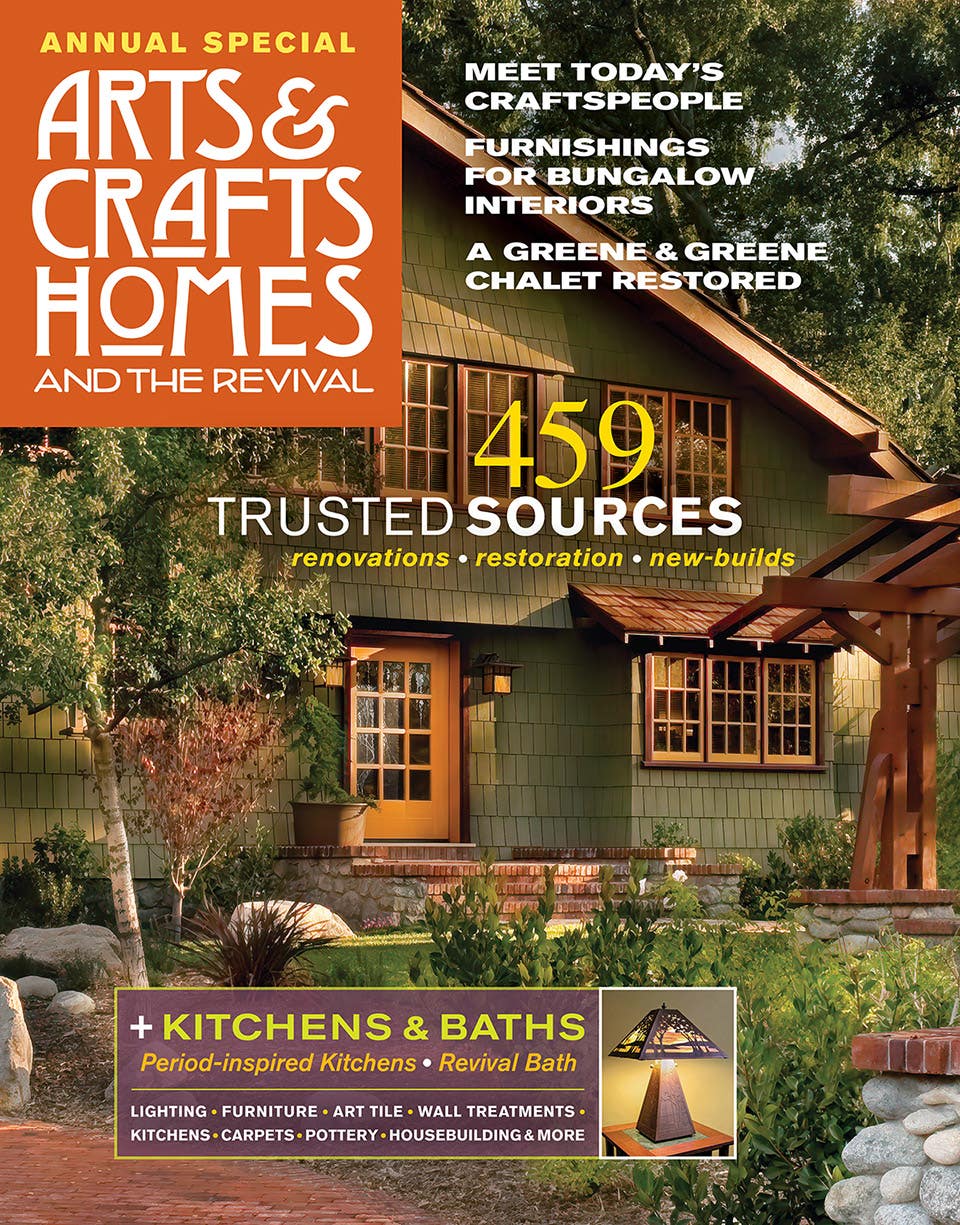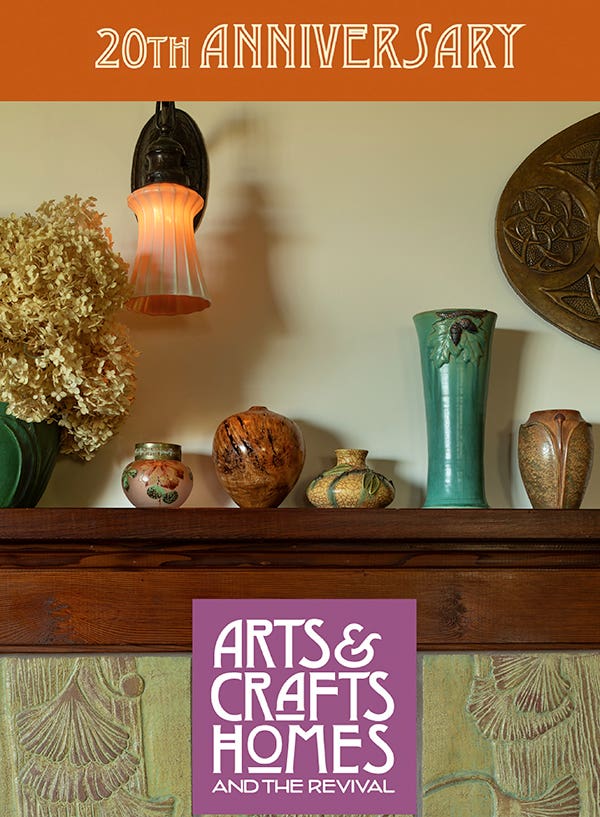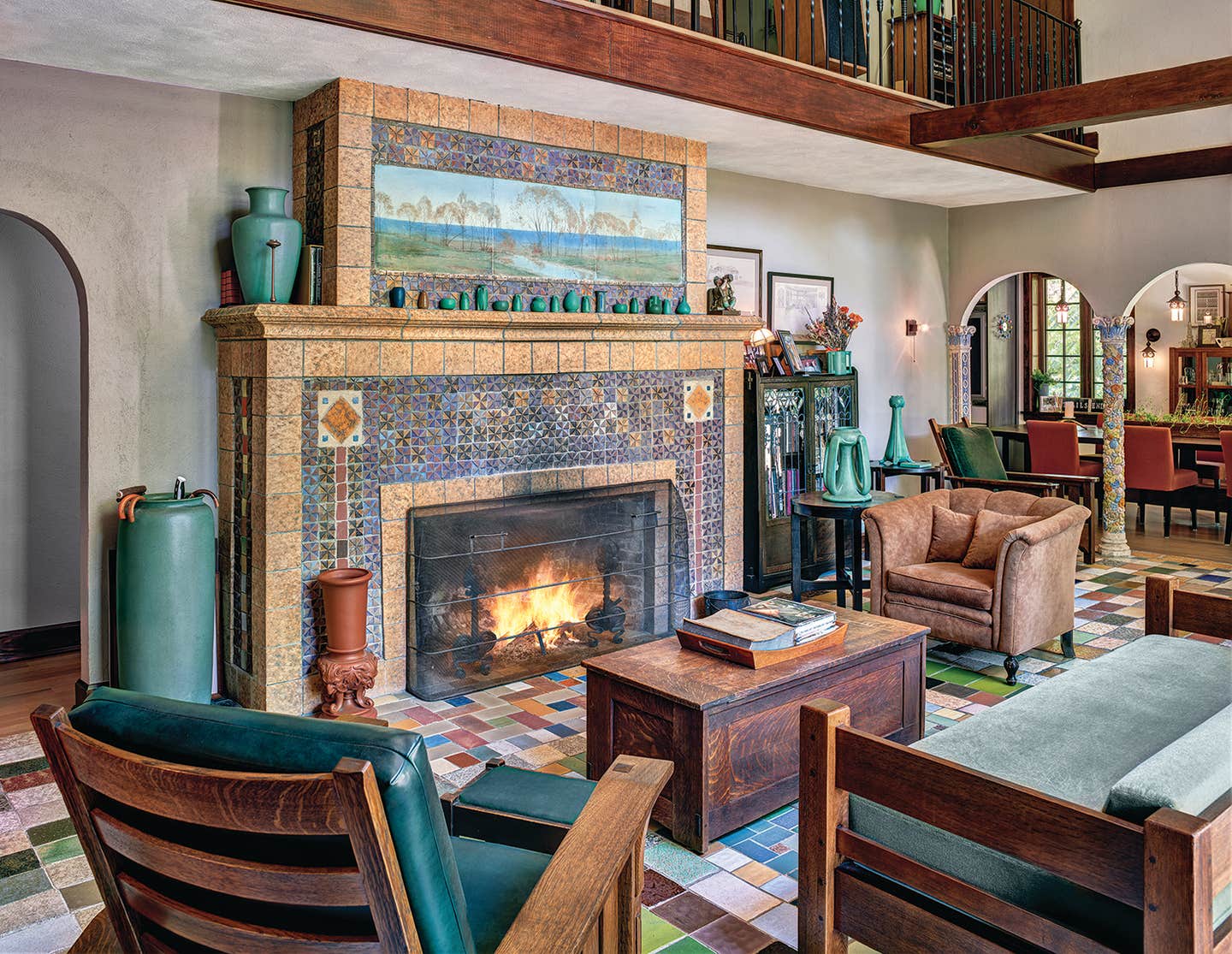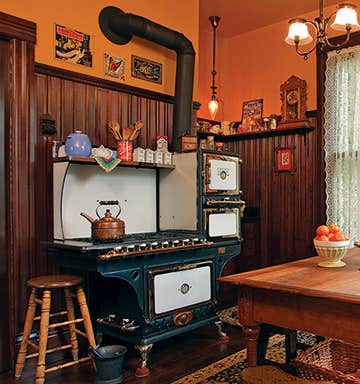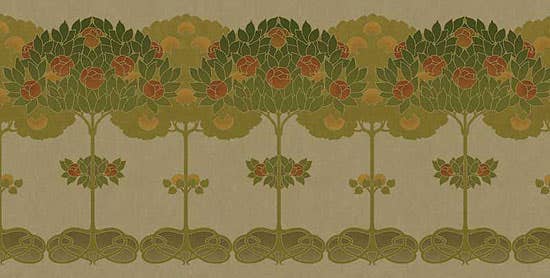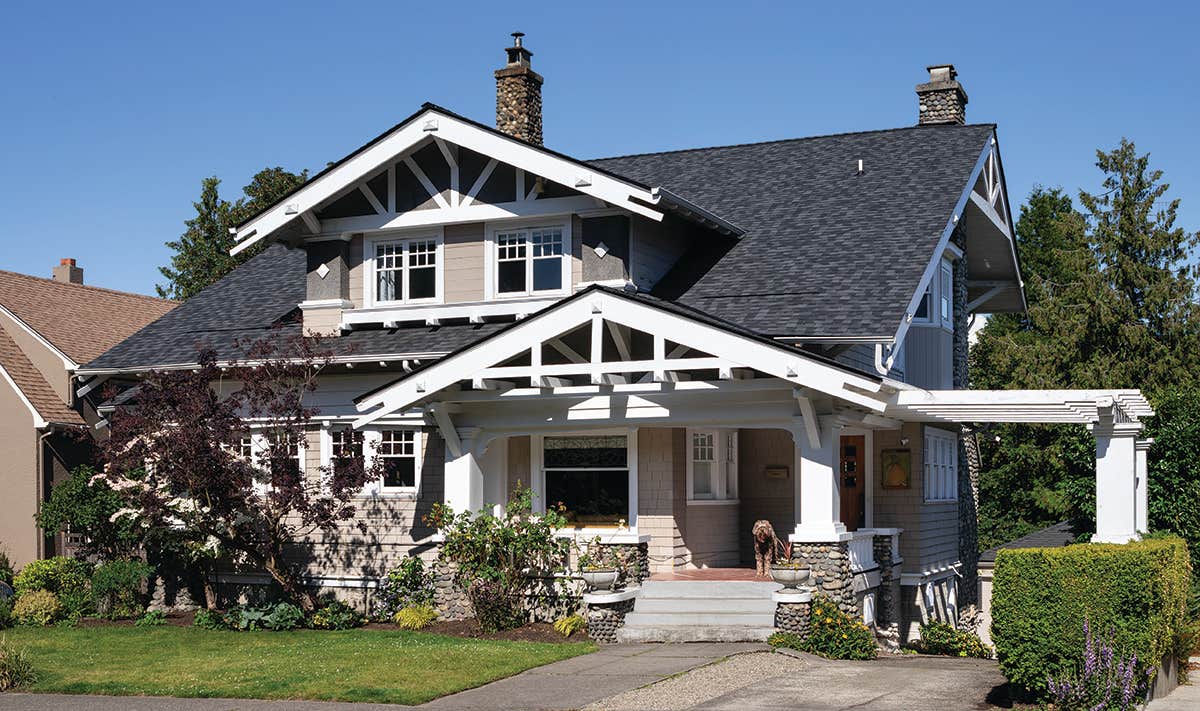Metalwork in the Design of the Arts & Crafts Home
A resurgence of fine work brings us such useful and beautiful objects for the home as fireplace tools, stove hoods, garden gates, handsome lighting, metal art tiles, and tabletop wares.
A resurgence of fine work brings us such useful and beautiful objects for the home as fireplace tools, stove hoods, garden gates, handsome lighting, metal art tiles, and tabletop wares.
As much as woodwork and ceramics, decorative objects crafted of copper, brass, and iron lend richness and artisanry to the home, and such objects were intrinsic to the Arts & Crafts interior. In the U.S. at the beginning of the 20th century, such artist–craftsmen as Samuel Yellin resurrected an old tradition of craftsmanship in metal. Today’s artisans are similarly talented.
Robert Trout, for an example, was inspired by Elbert Hubbard and has been a Roycroft Renaissance Master Artisan since 1998, specializing in hand-hammered copper. Trout is mindful of Hubbard’s “head, heart, hands” motto, putting his design, artistry, and skill into each piece. Objects include chargers and plates, picture frames, vases, letter openers, and candlesticks. Trout’s work is shown in the Copper Shop Gallery in East Aurora, N.Y.
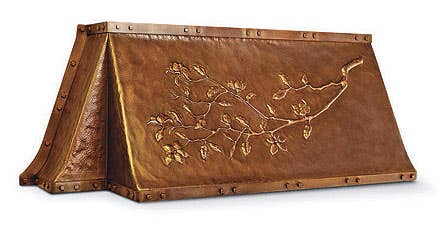
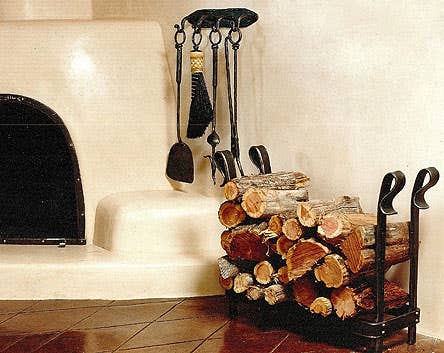
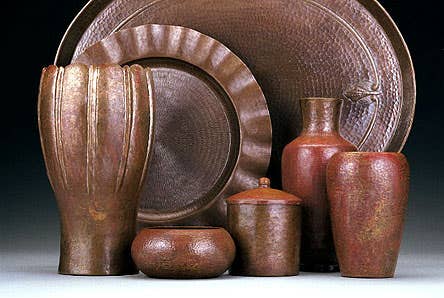
Fellow Roycroft Master Artisan Ronald VanOstrand began working with metal in high school (and he teaches high-school art today). He makes make hand-chased vases, clocks, and jewelry in copper, bronze, silver, and gold. VanOstrand draws his designs by hand, then scans them into a computer for archiving and refinement. Ron is quite sure that Hubbard would have used the personal computer as a tool, had it been invented. Patterns are transferred onto the copper and then chased into the surface with small hammers and chisels. Ron often patinates his copper with oxidizing chemicals for a rich antiqued sheen.
In true Arts & Crafts tradition, New Mexico metal artist Christopher Thomson is inspired by nature and the monumental rock formations of the Southwest. Making everything from candlesticks and chandeliers to tables and chairs from white-hot iron and bronze, which allows the hammering, stretching, and bending that creates the design.
The Tree of Life was a favorite motif of earlier craftsmen—as was the peacock, representative of wisdom and longevity. Charles Bushere of Bushere & Son Iron Studio grew up in southern California and from an early age was taught to appreciate Batchelder, Bauer, and other early California artists and potteries. It’s no surprise that his fine Peacock firescreen was inspired by the design on a Batchelder tile. One screen can take over 55 hours to make.
Decorative tiles were a staple of Arts & Crafts design. Jay Gibson of Metaphor Bronze produces solid cast-bronze tiles in designs inspired by nature. The stylized flowers and tendrils of Gibson’s ‘Aubrey’ line are a favorite among bungalow owners. The metal tiles look great in backsplashes, bathrooms, and on the porch.
Railings and gates, inside and out, are the most popular requests for Harris Metalsmith Studio. Founder Matt Harris explains that each piece is custom designed. Again, details are often inspired by nature in the Arts & Crafts spirit. The branch of an oak tree translates into an iron rail, a weeping birch cascades in iron down the railing of a pool stairway, echoing trees the line the driveway nearby.
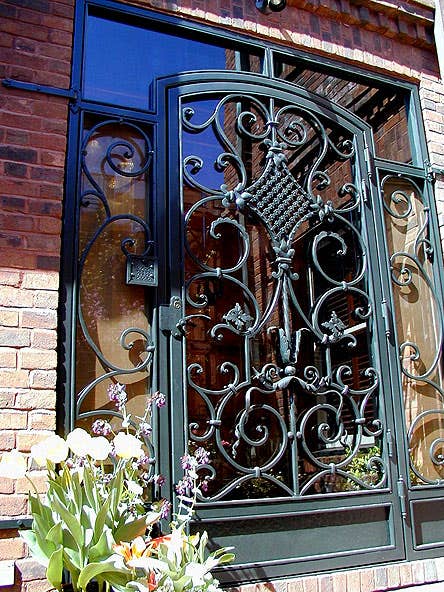
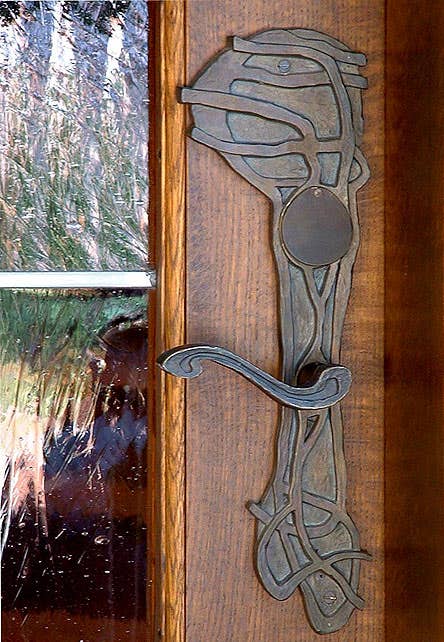
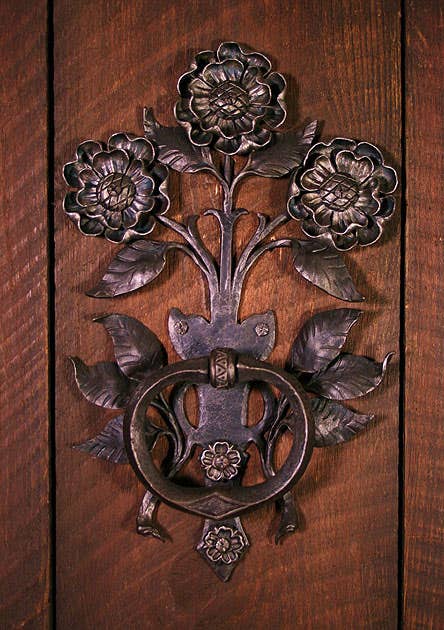
Metal fittings from fences to fountains often anchor the garden. Conservation and reproduction both are offered by Heritage Metalworks, says co-owner Matt White. With his brother Jon and their father Michael, he has worked on projects that include restoration of Arts & Crafts-period railings and vintage armillary spheres.
Finish gives metal objects protection and their beauty. Lowell Chaput has been forging iron for over thirty years, creating both unique sculptures and home embellishments like door hardware and chandeliers. To achieve a patina of age for an interior project, Chaput has a several-step process. After forging, he sand-blasts a piece to raw metal and sprays it with a mixture of hydrogen peroxide and liquid dish-soap to produce a dark red-rust finish. After it dries, the metal is rinsed with fresh water and baking soda to neutralize the acids, then oiled and waxed.
Metal Artisans Today
Brian D. Coleman, M.D., is the West Coast editor for Arts & Crafts Homes and Old House Journal magazines, our foremost scout and stylist, and has authored over 20 books on home design.

